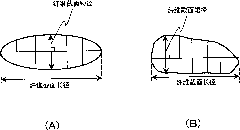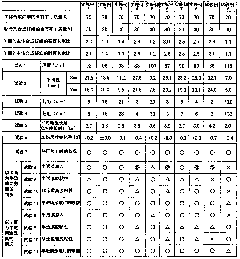Semipermeable membrane supporting body and manufacturing method thereof
A manufacturing method and semi-permeable membrane technology, which is applied in semi-permeable membrane separation, chemical instruments and methods, permeation/dialysis water/sewage treatment, etc., can solve the problem of inability to disperse uniformly, prevent semi-permeable membrane solution from penetrating, melting, etc. question
- Summary
- Abstract
- Description
- Claims
- Application Information
AI Technical Summary
Problems solved by technology
Method used
Image
Examples
Embodiment 1
[0144] Large diameter fiber (stretched polyester fiber, fiber diameter 14.3μm, fiber length 5mm, elongation rate 45%, tensile strength 0.40N / tex), binder synthetic fiber (undrawn polyester fiber, Fiber diameter 10.5μm, fiber length 5mm, melting point 230℃), fine-diameter fiber (stretched polyester fiber, fiber diameter 6.4μm, fiber length 5mm, elongation 45%, tensile strength 0.40N / tex), The mixing ratio of 35:30:35 is mixed and dispersed in water. After the wet paper is formed by a cylinder paper machine, it is dried by hot pressing with a Yankee dryer with a surface temperature of 130°C to obtain a weight per unit area of 80g / m 2 Sheet.
[0145] Using a calendering device combining a heated metal roll and a heated metal roll, the obtained sheet was subjected to hot pressing under the conditions of a temperature of 200° C., a pressure of 785 N / cm, and a processing speed of 6 m / min to obtain a semipermeable membrane support. It should be noted that the surface in contact with t...
Embodiment 2
[0147] A semipermeable membrane support was obtained in the same manner as in Example 1, except that the processing speed during the hot press processing was set to 30 m / min.
Embodiment 3
[0149] The semipermeable membrane support was obtained in the same manner as in Example 1, except that the processing speed during the hot pressing was set to 60 m / min.
PUM
| Property | Measurement | Unit |
|---|---|---|
| Breaking length | aaaaa | aaaaa |
| Fiber diameter | aaaaa | aaaaa |
| Fiber length | aaaaa | aaaaa |
Abstract
Description
Claims
Application Information
 Login to View More
Login to View More - Generate Ideas
- Intellectual Property
- Life Sciences
- Materials
- Tech Scout
- Unparalleled Data Quality
- Higher Quality Content
- 60% Fewer Hallucinations
Browse by: Latest US Patents, China's latest patents, Technical Efficacy Thesaurus, Application Domain, Technology Topic, Popular Technical Reports.
© 2025 PatSnap. All rights reserved.Legal|Privacy policy|Modern Slavery Act Transparency Statement|Sitemap|About US| Contact US: help@patsnap.com



